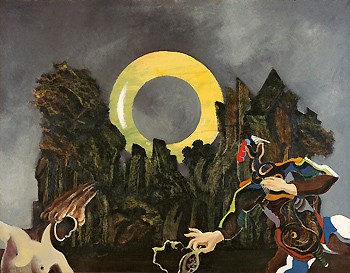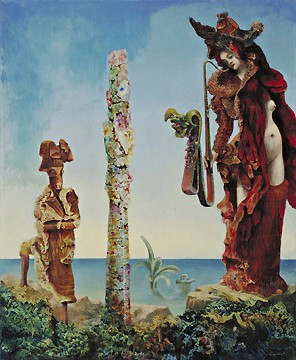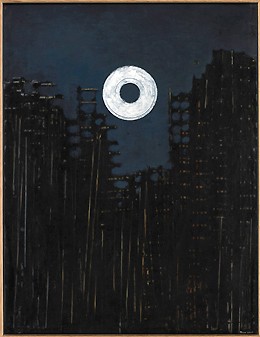
Max Ernst, La Vierge corrigeant l´enfant Jésus devant tres témoins: André Breton, Paul Éluard et le peintre, 1926 © Max Ernst/BUS 2008. Museum Ludwig, Köln. Photo: Rheinisches Bildarchiv, Köln
Max Ernst
Dream and Revolution
20.9 2008 – 11.1 2009
Stockholm
We perceive that a new generation is attracted to his multifaceted œuvre in an era that holds many parallel realities – not least his petrified and imaginary landscapes that have many similarities with computer games and fantasy literature.
Max Ernst. Dream and Revolution will comprise some 175 works; paintings, collages, works on paper and sculptures. The term dream in the title refers to the importance of dreams and the unconscious in his works, while revolution stands for the way he challenges conventions and expectations in his art.
Max Ernst is one of the most influential and important 20th century artists, an artist who changed his approach and style constantly throughout his artistic career and reflected on what art could be after his experiences in the First and Second World Wars.
The pervading artistic strategy in Max Ernst’s œuvre is to recycle visual material and combine it into new imageries. The collage became his constant method. The term “dream” in the exhibition title refers to the importance of dreams and the unconscious in his works, while “revolution” stands for the way he challenges conventions and expectations in his art.
It is now 40 years since Moderna Museet featured a major survey of Max Ernst. Today, his work is more relevant than ever. We perceive that a new generation is attracted to his multifaceted œuvre in an era that holds many parallel realities – not least his petrified and imaginary landscapes that have many similarities with computer games and fantasy literature.


Curators:
Iris Müller-Westermann, curator of international art, Moderna Museet
Werner Spies, art historian and Max Ernst expert
Kirsten Degel, curator, Louisiana Museum of Modern Art
Exhibition architecture and catalogue design: chezweitz & roseapple, Berlin.
The exhibition is produced jointly with Louisiana Museum of Modern Art, to which it will proceed in spring 2009. In conjunction with the exhibition an extensively illustrated catalogue will be published in Swedish, English and German, by Hatje Cantz Verlag.
With support from
![]()










